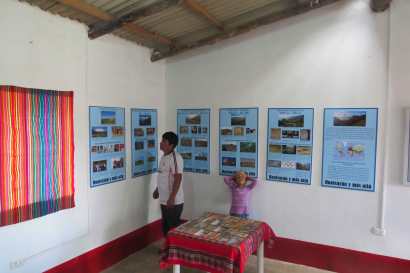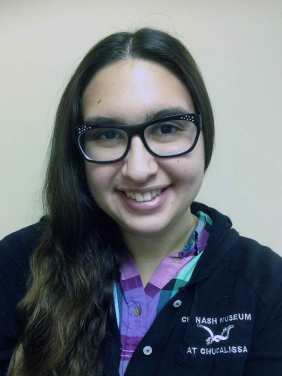 For the past few years, half of the final exam in my Museum Practices graduate seminar in the Museum Studies Program at the University of Memphis consists of responding to the following:
For the past few years, half of the final exam in my Museum Practices graduate seminar in the Museum Studies Program at the University of Memphis consists of responding to the following:
Put yourself in the position of John or Josephine Q. Public. In the current economic chaos, the bank is foreclosing on their home, they have lost their jobs, and the city just reduced their public services. In referring to the National Endowment for the Arts and the Institute of Museum and Library Services, the House Budget Committee recently argued that “The activities and content funded by these agencies…are generally enjoyed by people of higher income levels, making them a wealth transfer from poorer to wealthier citizens.” Isn’t your research or the position you aspire to a museum professional just another example of this wealth transfer? What do John and Josephine Q. Public get for their tax dollars that fund your research/position?
This year, Paige Brevick, a graduate student in Egyptology and the Museum Studies Graduate Certificate Program wrote a compelling response that incorporates some of the ongoing discussions of museologists today, specifically based on her experiences on the staff of the Museum of Biblical History in Collierville, Tennesse, U.S. Here is her essay:
The stereotype of museums as hoarders of wealth, both economically and intellectually, is an outdated myth in desperate need of revision. While museums may have historically catered to the elite or academic, they have undergone significant reform in recent years to increase the transparency of their collections and develop their resources. Today, even the most research driven institutions must find innovative ways to entice the public and interact with them through increasingly creative means.[1] This level of social engagement encourages a dialogue between the public and academic that is rarely seen in other settings. It is in this way that the museum leaves behind the stereotype of “elitism,” rather, it strives towards the ideal of the “participatory,” where a community may take an active role in all aspects of museum administration.[2] Tax dollars then do not only fund high-brow research or support unethical wealth transfer. Instead, the Public’s tax dollars go to fund museums who are increasingly aware of the needs of their communities, and who cultivate environments for learning.
As curator at the Museum of Biblical History, a small museum with limited staff in Collierville, Tennessee, my duties are highly varied. Not only do I conduct research and work in the gallery, but I am constantly seeking out new ways to engage the public with our exhibitions. The Museum of Biblical History has served the community for over two decades and has had to adapt to the needs of the changing community over time. At its onset, the museum hosted lectures on archaeology that were free to the public. Attending a museum lecture like this would provide John and Josephine Q. Public the opportunity to briefly leave behind the troubles they face in a hopefully inspiring way. Though not necessarily problem-solving in itself, attending free lectures is a way for the public to better understand what museums in their town have to offer. Attendance at a lecture like this may be the first step to getting involved in action-oriented projects within the community, as museum programming brings people from different social groups together.
In an effort to better serve the community of Collierville, the Museum of Biblical History now offers Bible Story Time programming to children once a week. Local members of the community, including the mayor and firefighters, volunteer to read Bible stories to children in the museum. The museum provides two crafts per program, which student participants make in the museum and take home. Museum staff and volunteers supervise the event, with the support of visiting parents. This program is provided free of charge. Though the Publics are going through difficult times with reduced public services, turning to the resources provided by their local museums may alleviate small concerns and provide a degree of routine to their schedule. Many museums offer similar free programming at least once a month.
Though the Museum of Biblical History is small, it adjusts to meet the needs of the community. This winter the museum stored its entire Near Eastern artifact collection away, in order to showcase a highly requested display of nativities from around the world. Even the crèche collection itself is on loan from a community resident. As an archaeologist, part of me was hesitant to make such a dramatic change in our gallery. The public, however, had spoken so the show was underway. I curated the nativity exhibition and watched on opening night as over a hundred people packed into the small museum, doting upon handmade nativities. The show brought people together to discuss culture, tradition, heritage, art, and the history of Christmas as it is understood from international perspectives. The Publics tax dollars support experiences like this one. Their funding encourages not only an appreciation of art and history, but of empathy across cultures, even in the small town of Collierville.
Museums should strive to become beacons of knowledge, and act as windows into other worlds, whether those worlds are a glimpse into an ancient culture or an exhibit featuring local artists. A museum is not only a safe-haven for research or objects of the past. If museums are to remain successful in an economically turbulent environment, they need to continue to focus on making the information they possess accessible to the communities they serve. The Publics, then, are not transferring their money into a disconnected or wealthy museum entity. Instead, their tax dollars go back into their own community, creating educated generations for years to come.
[1] AMA, Word of Mouth Marketing, pg. 38-40.
[2] Simon, Nina. “Chapter 7: Collaborating with Visitors,” In The Participatory Museum.










